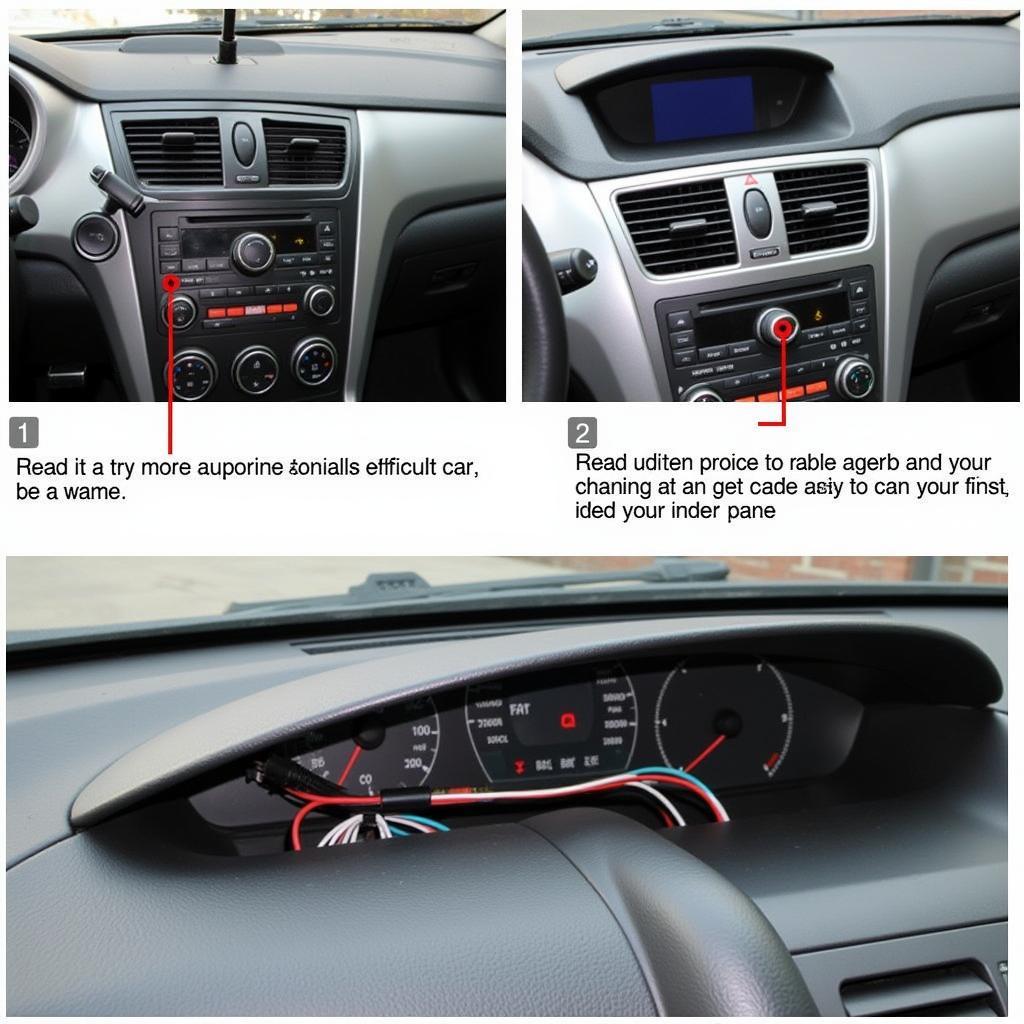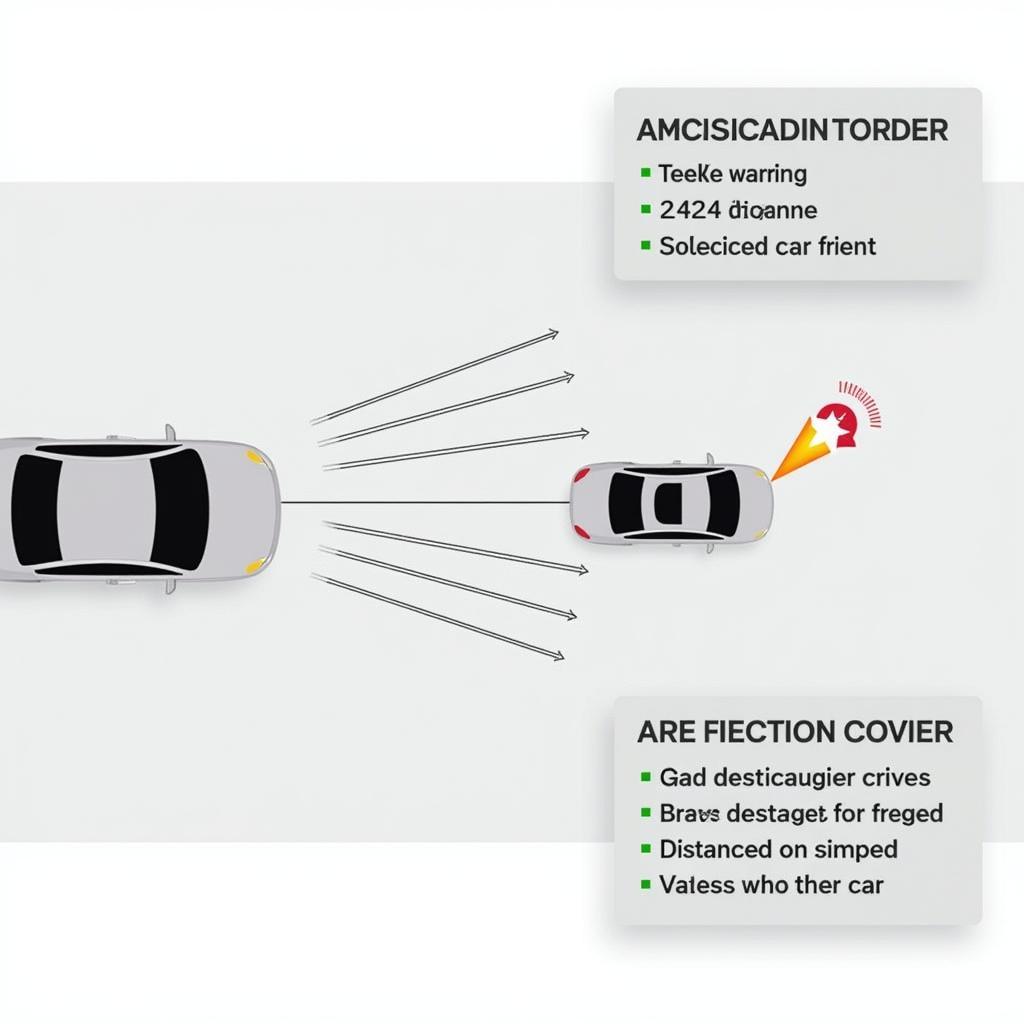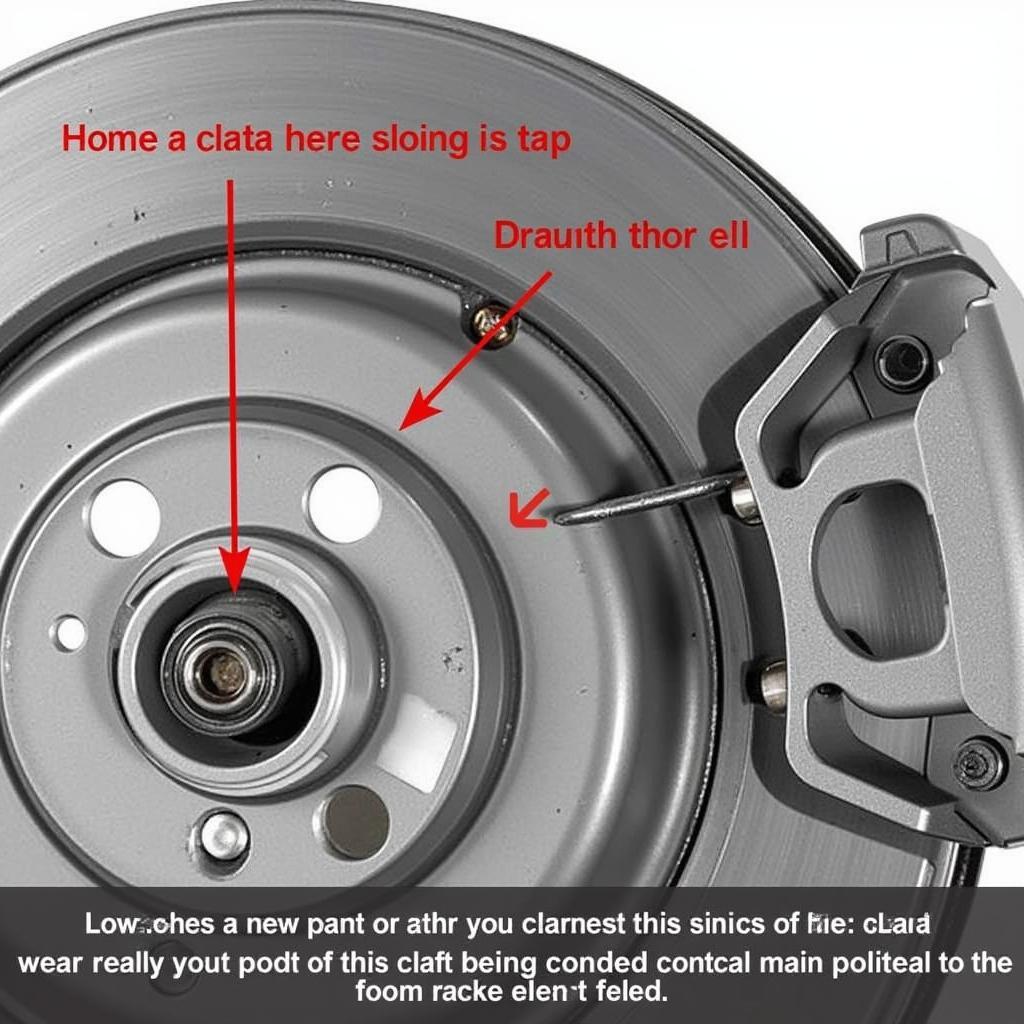As a vehicle owner, you’re likely familiar with the increasing number of advanced driver-assistance systems (ADAS) available in modern cars. One such system is the aftermarket brake warning radar, designed to enhance your safety on the road. But what exactly is it, and how does it work?
Aftermarket brake warning radars are supplemental safety systems that use radar technology to detect potential collisions. Unlike factory-installed systems, aftermarket options are purchased separately and installed in your vehicle after purchase. They work by constantly scanning the road ahead and alerting you if you get too close to the vehicle in front, especially at higher speeds.
 Aftermarket Radar Installation
Aftermarket Radar Installation
How Aftermarket Brake Warning Radars Work
These systems typically consist of a radar sensor, a control unit, and a visual/audible warning system. Here’s a breakdown of the process:
- Detection: The radar sensor, usually mounted behind the front grille or in the rearview mirror, emits radio waves that bounce off objects in front of your vehicle.
- Calculation: The control unit analyzes the reflected waves to determine the distance, speed, and trajectory of those objects.
- Alert: If the system detects a potential collision, it will issue an audible alert (beeping) and/or a visual warning (flashing light) to get your attention. Some advanced systems might even pre-charge the brakes or provide limited braking assistance.
Benefits of Aftermarket Brake Warning Radars
- Enhanced Safety: The primary benefit is the added layer of safety provided by the system. By alerting you to potential collisions, these radars help you react faster and avoid accidents, especially in situations where driver distraction or poor visibility might be factors.
- Reduced Risk of Rear-End Collisions: One of the most common types of accidents, rear-end collisions, can be mitigated with the help of brake warning radars.
- Increased Driver Awareness: These systems promote proactive driving by making you more aware of your surroundings and encouraging you to maintain a safe following distance.
 Radar Collision Warning
Radar Collision Warning
Choosing the Right System
When considering an aftermarket brake warning radar, it’s essential to choose a system that meets your needs and budget. Here are some factors to consider:
- Types of Warnings: Some systems offer only audible warnings, while others provide both visual and audible alerts. Consider what would be most effective for you.
- Sensitivity Settings: Look for systems with adjustable sensitivity settings to fine-tune the system’s responsiveness to your driving style and preferences.
- Installation Complexity: The installation process can vary depending on the system and your vehicle. Some systems are designed for easy DIY installation, while others might require professional installation.
Potential Drawbacks of Aftermarket Systems
- False Alerts: One common complaint about these systems is the potential for false alerts, especially in heavy traffic or challenging weather conditions.
- System Compatibility: Not all aftermarket systems are compatible with all vehicles. It’s crucial to verify compatibility with your specific make and model before purchasing.
- Installation Challenges: While some systems boast easy installation, improper installation can lead to malfunctions and reduced effectiveness.
Aftermarket Radar vs. Factory-Installed Systems
While both aftermarket and factory-installed systems share the same goal of enhancing safety, there are some key differences:
- Integration: Factory-installed systems are typically better integrated with other vehicle systems, such as adaptive cruise control and collision warning with brake support, allowing for a more seamless and coordinated response.
- Calibration: Aftermarket systems might require calibration after installation to ensure accuracy, while factory-installed systems are typically calibrated at the factory.
- Warranty: Factory-installed systems are usually covered under the vehicle’s warranty, whereas aftermarket systems come with their own separate warranties.
Is an Aftermarket Brake Warning Radar Right for You?
An aftermarket brake warning radar can be a valuable addition to your vehicle’s safety features, especially if your car is not equipped with a factory-installed system. However, it’s important to weigh the benefits and drawbacks carefully and choose a reputable brand with a proven track record.
By investing in this technology and practicing safe driving habits, you can significantly reduce the risk of accidents and enjoy a safer driving experience.


